The Retro-Line self-regulating heating cable system is supplied in a predetermined length with all necessary components for a complete job-ready system. Retro-Line heat cable for pipes is a safe and reliable solution to internally freeze protect many different fluid pipe applications. Our heat cable for pipes, sometimes referred to as pipe heat tape, includes but is not limited to: residential water supply from wells, lakes, rivers, building to building and sump pump discharge lines and pressurized or high-volume water drain pipes which may consist of either metal and non-metal piping material. For polyethylene pipe applications, Retro-Line self-regulating heating cable system, also known as water line heat tape and pipe warmers, are supplied with a compression style fitting for easy connection to the pipe. Retro-Line can also be ordered with a threaded male adapter to allow simple interfacing of the pipe heater wire with other pipe types and sizes such as heat cable for inside PVC pipe, ABS, PEX, copper, galvanized and steel. Speak with our freeze protection cable experts to determine the correct heat cord for pipes for your application.
The Retro-Line in-pipe warmers cable is sometimes known as a pipe heat tape system which can be installed for continuous water line freeze protection or as a precautionary system to use only if pipe frost protection is needed for a freeze-up. Even in applications where the pipes are intended to be dry for short or extended periods of time such as sump pump lines, the Retro-Line heat cable for pipes presents no danger of overheating or melting the pipe. This makes the Retro-Line system an efficient pipe warmer, and suitable for all pipes, even plastic which does not always contain liquids. Retro-Line systems are self-regulating pipe warmers that can be trusted to provide efficient and reliable freeze protection.
The Retro-Line in-pipe warmers cable, system is constructed using high quality, industrial-grade trace heating cable which is robust and flexible, making installations easy, even in long length applications. Other outdated heating tape, water line heat tape, water line heat wrap, heat trace tape and pipe heater wire systems do not offer this level of installation capability. Short Retro-Line pipe frost protection systems can simply be pushed into the pipe while longer systems may need to be pulled in using a fish tape, string, or small rope. Retro-Line systems 40 ft. (12m) and longer are supplied on a dispensing reel to protect the pipe warming cable and fittings from mechanical injury while the product is simply deployed into the pipe. It is not uncommon to push systems up to 300 ft (91m). Another advantage of the Retro-Line pipe heater wire and pipe warming cable durability is that the downward end of the cable does not need to be fastened as it will never move or slide up the pipe with the flow of the water. This feature is extremely important as it renders the heat trace cable fully serviceable. The Retro-Line waterline heating cable system can easily be removed and replaced should it ever become necessary. In most installations, and unlike other outdated water line heat wrap and waterline heating cable, all of the installation work can be performed at the entry point of the pipe without needing to access the far end. Ask our experts to learn more about the advantages of Heat-Line self-regulating heating cable, sometimes referred to as self-regulating heat tape and pipe warming wire.
Unlike outdated water line heat wrap or pipe heat trace tape, the Retro-Line self-regulating heating cable system includes the most advanced end seal technology making it the most reliable internal trace heating cable on the market. Retro-Line pipe warmers are suitable to be installed inside potable (drinking water safe) water supply systems which have water pressure up to 230 PSI. For higher pressure systems see CARAPACE, RETRO-FM or contact Heat-Line and speak with an application specialist about our superior pipe heat tape and water line heat tape alternatives.
For non-pressurized sewage pipes and large culverts and drains see Retro-DWS.
For pressurized sewage forced mains and large diameter potable water supply pipes see Retro-FM.
For applications also requiring polyethylene water pipe see Heat-Line.
For high pressure or constant pressure water supply pipes see CARAPACE.
Retro-Line is an internal heat tracing system designed to provide reliable freeze protection. Examples include but are not limited to:
- Lake and river water supply
- Well water supply including dug, drilled and artesian wells
- Building to building water supply
- Sump pump discharge pipes
- Commercial/ Industrial Facilities
- Large drains
- Suitable for jet pump and submersible pump applications
- Safe for use with metal and non-metal pipes
Suitable pipe types for Retro-Line include but are not limited to:
- Polyethylene (ID and OD controlled)
- ABS
- PVC
- PEX
- Copper
- Galvanized
- Ductile Steel
Retro-Line can be found providing freeze protection in many of the following places:
- Homes, cottages, resorts and farms
- Municipal homes and buildings
- Mining and Exploration Camps/Outposts
- Commercial/ Industrial Facilities
Retro-Line is a unique high-quality product, which may be adapted to fit a variety of specialized applications not listed above. If you feel you have a special or unique application for Retro-Line please contact Heat-Line directly and speak with one of our knowledgeable product specialists.
Special Considerations:
Special considerations should be made if the pipe contains any fittings which the heating cable is expected to pass through. The heating cable is not engineered to insert and push around any 90-degree elbow fittings. Should you have any abrupt fittings that turn 90 degrees or more, they must be replaced with pipe to create sweeping bends which will allow the heating cable to pass through. In the event you have any straight couplers within the pipe, the heating cable should be able to pass through. It is however recommended to expose these fittings and check the inside to make sure there are no rough edges or burrs which may potentially injure the heating cable during installation. Any current fittings can be replaced with Heat-Line approved Philmac fittings if the suitability of the current fittings is a concern. If you have questions or apprehension about current fittings, contact Heat-Line and speak with a technician to help determine suitability and options.
As Retro-Line is an internal heating cable, special attention to the application should be planned prior to ordering a system. The length of the Retro-Line system can be adjusted if too long, however, it is important to note additional heating cable cannot be added if the original system is too short. Please see the MEASURING TIPS tab for important information.
Features
- 5 year limited warranty, 10 year extended warranty available
- Cord set (hardwire) connected models available upon request
- No other product combines these features or offers the reliability and flexibility
- Simply plugs into a 120V or 240V receptacle (GFC models only). No extra electrical work is required
- Available in 5 ft. (1.5 m) increments up to 100 ft. (30m) and increments of 10ft. (3m) to a maximum length of 550 ft. (168m), custom lengths are also available
- Can be supplied with male adapter fitting ranging from 1 inch to 2 inch MIPT to suit various pipe types
- Can fit existing polyethylene pipes ranging from 3/4 inch ID up to 2 inch ID
- Polyethylene pipe can be installed and tailored to suit requirements before Retro-Line length is determined, allowing installation flexibility
- Customizable for various application requirements
- Can be fully insulated to increase energy efficiency
- Can be used with various optional control devices including timers and thermostats
- Self-regulating/conductive polymer heating cable
- Suitable for installations inside metallic and non-metallic pipes (with proper fitting)
Benefits
- Electrically Certified by cCSAus (Canada and USA)
- Certified Drinking Water Safe NSF/ANSI 61 (Canada and USA)
- Approved for potable water applications
- Manufactured in North America
- Ground fault protection is integral to the system (GFC models only)
- Philmac adapter fittings ensure pressure connections are simple, secure and leak proof
- Suitable for above ground applications when properly insulated
- No need to excavate below the frost line, thus saving costs on installation
- Supplied job-ready based on specific freeze protection requirements
- Completely serviceable
- Heating cable is durable enough to stay in place within the entire length of pipe without the need of a downward hooking or latching device
- Most reliable and energy-efficient system on the market
- Ease of installation – can commonly be pushed in pipe up to 300 feet (91m)
- Long systems can be drawn in with fish tape or rope
- Proven performance in cold climates (even in above ground applications)
- Provides reliable freeze protection for many pipe diameters
- Easily and quickly installed in most existing pipes without their removal
- Fast installation, lengths greater than 35 feet (10.5m) are supplied on a patented dispensing reel
- Will never melt or burnout the pipe, even if the pipe is dry
Retro-Line freeze protection cable employs the unique and advanced performance of self-regulating heating cable technology. Unlike outdated water line heat wrap or pipe heat trace tape the Retro-Line self-regulating heating cable system can effectively increase heat and energy output to every point microscopically along its length which is cold and simultaneously reduce heat and energy output to points that are warm. You never have to worry about the Retro-Line heating cable overheating causing a risk of melting and fire because of the self-regulating pipe warmers cable technology. Retro-Line freeze protection cable gives you the peace of mind of reliable freeze protection without the risk. Have confidence in your Retro-Line heating cable system and no longer worry that your outdated heating tape or electric heat tape for pipes is unreliable. Retro-Line has become an essential product for homeowners, engineers, and building maintenance professionals to provide safe and reliable freeze protection. Our goal is to help you select the right self-regulating heat tape and heat cord for pipes to avoid any issues in your home or business this winter.
An important feature and certification of the Retro-Line pipe warmers cable products, which is sometimes overlooked when investigating and purchasing an internal heating cable, is that the Retro-Line system is NSF/ ANSI 61 certified Drinking Water Safe. This means that the Retro-Line pipe warming wire and cable is a heat cable for inside PVC pipe that complies with all the required health effects criteria set by NSF for plumbing heat tapes and products that are part of a potable water supply system. This certification and feature are unmatched by other outdated electric heat tape for pipes, pipe heater wires, heat trace tapes and plumbing heat tapes.
To further increase the energy efficiency of your Retro-Line water pipe freeze protection and waterline heating cable system, it is recommended to add thermal insulation and a thermostat. The additional thermal insulation works to reduce heat loss from the pipe warming wire, and the thermostat allows you to duty cycle your Retro-Line pipe warming cable system based on pipe temperature. Both accessories combined can increase energy efficiency by as much as 80%. When searching for electric heat tape or heating tape for pipes, a self-regulating heating cable system with a thermostat is an effective and reliable solution in any application where you find heat tape may be required. Speak with our sales and technical support team to determine the correct heat cord for pipes system for a heat cable for inside PVC pipes. Our sales team would be happy to discuss a pipe warmer, sometimes referred to as self-regulating heat tape, for your application.
Measuring/Ordering Recommendations for Retro-Line
Always measure prior to ordering, do not assume or estimate the length required.
- The Retro-Line is an advanced internal self-regulating heat trace cable system factory finished and supplied job-ready to a pre-determined length provided at the time of order.
- Retro-Line systems are priced in standard lengths of 5 ft. (1.5m) increments up to 100 ft. (30m), then in 10 ft. (3m) increments from 100 ft. to 550 ft. (30m x 168m).
Important Notes:
- A Retro-Line system can never be lengthened. If a longer system is needed an entire new system would be required.
- A Retro-Line system can never be cut shorter at the job-site. If a shorter system is needed it can be shipped back to Heat-Line to be shortened or it can be shortened at the job-site by following careful extraction instructions. Always contact Heat-Line for guidance prior to proceeding.
- While most Retro-Line systems are manufactured in standard lengths, special lengths of any measurement can also be requested within the maximum lengths allowed. For example, if an 18ft. (5.5m) system was required for a drilled well application, instead of purchasing a 20 ft. (6m) system, a special order could be placed for an exact length of 18 ft. (5.5m).
- It is important to remember when measuring the intention is to provide freeze protection along the entire section of the water supply pipe or sump pump line that is in danger of freezing. For example, in a lake home or cottage application it is best to have the Retro-Line protecting the pipe from within the house to the required depth of water in the lake.
- A special benefit of Retro-Line often overlooked, is the fact that entire piping systems can be pre-installed and tailored to size, prior to determining Retro-Line length. An example of this flexibility would be; purchasing and installing 200 ft. of pipe to the intake or pump location deep in the lake. After this is accomplished the required length of Retro-Line can be measured and installed to freeze-protect the pipe to a point below the lake ice near the shoreline. In other words, 200 ft. of pipe may be installed, while only 100 ft. requires freeze-protection.
Lake/River Applications
- In a lake and/or river installation, the Retro-Line system should start in the heated building or room and end (terminate) in the lake at a minimum total water depth of 6 ft. (2m) at LOW water mark when a surface ice thickness of 3-4 ft. (1m -1.25m) is expected. The total depth of water required may decrease and or increase depending on the depth of ice.
Well Applications
- In a drilled well application, the heater can run the length of the pipe, but cannot enter the pitless adapter or it may sustain damage. If the pitless adapter is above grade, Heat-Line suggests installing a well tile around the steel well casing and filling with earth. There are other methods of protecting these applications; consult Heat-Line for specific application requirements.
- In a drilled or dug well application the Retro-Line system should start in the heated building or room and end (terminate) at the well casing. In drilled well applications, the Retro-Line system will end at the edge of drilled well casing just prior [2-3inches (51-76mm)] to the pitless adapter at the wellhead.
- Note that depending on the fitting type and size ordered with the Retro-Line, the heating cable may measure slightly shorter than what was ordered. For example a 20 ft (6.09m) Retro-Line with a 1 inch tee fitting will only measure 19 ft 4 inches (5.89m) from the end of the tee. This is because 8 inches of heating cable sits within the plumbing tee body.
Above ground pipes
- In applications where pipes will be exposed to the atmosphere (free air), installed over rocky terrain or under buildings, insulation is required to maintain heat within the pipe and ensure energy efficiency and reliability.
- In applications where the existing problematic potable water supply pipe is exposed and above ground, the simplest method of measuring is with an external measuring device such as a measuring tape and/or flexible ruler.
- In some applications where the nomenclature (writing) on the exposed pipe is visible, there will be measured increments marked on the pipe. You can use these increments markings to find the total distance between the two points, thereby providing a length of the Retro-Line that is required.
Buried pipes
- In applications where the existing problematic, potable water supply pipe is buried it is beneficial to internally measure the length of heating cable required with an electrical or plumbers fish tape.
Pipe size/type
- Not only is properly measuring the length of Retro-Line important but also determining the pipe size and type. The Retro-Line is supplied with a plumbing fitting to interface your water system. If wrong information about pipe and size is provided at the time of order then you will not be able to hook up the Retro-Line system to your pipe.
As in all cases, if you are unfamiliar or uncomfortable with the measuring and or installation of a Heat-Line product please consult directly with a Heat-Line application specialist or contact a qualified local tradesperson.
Q – What is the difference between Retro-Line and Retro-DWS?
A – Retro-Line is a cCSAus and NSF/ ANSI 61 approved system for internally heat tracing potable water supply pipes and sump pump lines. Retro-DWS is designed for safe and approved installations inside non-pressurized septic pipes and or in large drains where mechanical protection of the heater is desired.
Q – What is the difference between Retro-Line and Retro-FM?
A – Retro-Line is a cCSAus and NSF/ ANSI 61 approved system for internally heat tracing small diameter potable water supply pipes and sump pump lines. Retro-FM is designed for safe and approved installations inside pressurized septic pipes and large diameter water supply pipes. The Retro-FM system is also cCSAus and NSF/ ANSI 61 certified, and is commonly recommended for potable water supply pipes 2 inch or greater in diameter.
Q – Will Retro-Line restrict the water flow in the pipe?
A – The Retro-Line internal heating cable system is designed for minimal if any impact on water flow through a pipe. In common water supply pipe applications, the Retro-Line system has been shown not to provide any measurable effect.
Q – Can Retro-Line be installed inside septic pipes?
A – No. Similar to other internal heating cable Retro-Line is not electrical certified to be installed inside septic pipes as methane gasses may be present. For septic pipe applications Heat-Line has developed the Retro-DWS for non-pressurized septic pipes and the Retro-FM for pressurized septic pipes.
Q – I have straight couplers in my pipe, will Retro-Line pass through?
A – In the event you have any straight couplers within the pipe, the heating cable should be able to pass through. It is however recommended to expose these fittings and check the inside to make sure there are no rough edges or burrs which may potentially injure the heating cable jacket. Any current fittings can be replaced with Heat-Line approved Philmac fittings if the suitability of the current fittings is a concern.
Q – I have elbows in my pipe, will Retro-Line pass through?
A – No. The heating cable is not engineered to bend its way around any 90 degree or 45-degree elbow fittings. Should you have any abrupt elbow fittings, they must be replaced with pipe to create sweeping bends to allow the heating cable to pass.
Q – My pipe has sweeping bends along its length, will Retro-Line pass through?
A – Yes. The heating cable is engineered to bend its way through the pipe. As long the water supply pipe is making the sweeping bends without the need of an abrupt 90 or 45 degree pipe coupler the Retro-Line unit will pass.
Q – What length of Retro-Line can be pushed in the pipe?
A – It is not uncommon for a Retro-Line system to insert and push into a pipe for distances as long as 300 ft. (91m).
Q – What length of Retro-Line will I need?
A – The length of Retro-Line heating cable that will be required can change from application to application. In most applications, the entire pipe length is protected to prevent any chances the pipe could freeze further down the pipe. With help determining the total length required, please see the HOW TO MEASURE tab or contact Heat-Line to speak with a product specialist.
Q – What do I do if I have extra Retro-Line heating cable?
A – Care should be given when determining product length required however if the required length is less than what was ordered contact Heat-Line to speak with a product specialist for details on a procedure to reduce the length of heating cable within the pipe. DO NOT CUT HEATING CABLE
Q – Can Retro-Line be cut if too long?
A – No. The Retro-Line system manufactured by Heat-Line is a pre-assembled factory terminated advanced self-regulating heating cable system that is not designed to be field terminated and or tailored to length. Contact Heat-Line to speak with a product specialist for details on a procedure to reduce the length of heating cable within the pipe. DO NOT CUT HEATING CABLE
Q – My Retro-Line system is too short; can I add a small section onto the end? If not, what can be done?
A – No. The Retro-Line system manufactured by Heat-Line is a pre-assembled advance self-regulating heating cable system that includes a proprietary end-seal termination. As such the Retro-Line system cannot be spliced together or altered in the field. If a greater length of the Retro-Line is required you may purchase a single continuous product of the proper length, and or relocate a second power source and install an additional Retro-Line system to complete the required freeze protection. DO NOT CUT HEATING CABLE or POWER LEAD
Q- Is there a maximum length of Retro-Line heating cable systems?
A – Yes. The maximum circuit length of Retro-Line that is allowed on a 120V circuit is 220 ft. (67m), and 550 ft. (168m) on a 240V circuit.
Q – Where do I purchase the Retro-Line heating cable system?
A – The Retro-Line heating cable system manufactured by Heat-Line is available directly through Heat-Line and or any of our Heat-Line product distributors. For a list of Heat-Line product distributors in Canada and the United States please contact Heat-Line directly on our toll-free number at 800-584-4944.
Q – Does a 240-volt system use less power than a 120-volt system?
A – A common misconception is that a 240V electrical appliance consumes less energy than a 120V electrical appliance. Power consumption is measured in watts, not voltage. Whether you are consuming 500W at 120V or 500W at 240V you are still consuming 500W of energy.
Q – Can I (the homeowner) install Retro-Line?
A -Heat-Line provides proper and easy to follow installation instructions with all of our products, and offers market-leading technical support. As a result, most Heat-Line systems, including Retro-Line can be installed by homeowners; however, Heat-Line commonly recommends that a qualified tradesperson complete the installation process
Q – How much power does a Retro-Line consume?
A – All Heat-Line brand systems including Retro-Line employ Heat-Line’s advanced self-regulating heating cable technology which operates to deliver energy and heat output to areas of the pipe that are cold and reduces energy and heat output to areas which are warm. While the overall amount of energy consumed depends on multiple factors you can be assured that you are installing the most energy-efficient heating cable system available. If you would like to reduce your energy consumption further you can investigate the addition of a thermostat, timer, and or other control device.
Q – Is Retro-Line safe for use with plastic pipes?
A – The Retro-Line system is safe for use with all metallic and non-metallic pipes. The advanced self-regulating technology employed in the Retro-Line product renders it safe for use with plastic pipes even when dry as it can never overheat and damage the pipe.
Q – Does the Retro-Line come with a thermostat?
A – A thermostat is not included with the Retro-Line product as they are not required for proper and safe operation; however, a thermostat can be purchased as an additional accessory. Depending on system applications, or where automatic operation is preferred, a thermostat can be used to switch the system on and off to help conserve power or to duty cycle the system. When combined with insulation thermostats can substantially increase energy efficiency.
Q – Do I have to use insulation with the Retro-Line system?
A – Insulation is highly recommended when using the Retro-Line system, especially if the installation is above ground in ambient outdoor air. Insulation helps reduce the overall heat loss and therefore reduce the amount of energy the Retro-Line heating cable must consume. If the pipe is already buried, there is no need to dig up and expose the pipe to apply insulation.
Q – What type of insulation should I use with the Retro-Line system?
A – Heat-Line recommends to use insulation that is best suited to the environment in which it is going to be installed. A common type of insulation employed with Retro-Line heating cables is closed cell polyethylene insulation sleeves.
Q – Does the unit shut off when not required?
A – No. Retro-Line self-regulating heating cable systems increase heat output with cold but more importantly, decrease heat output with warmth. As a result, Heat-Line brand products are very energy efficient to operate, but do not completely shut off as they can only idle their output to a minimum amount. To completely shut off the system it must be unplugged or installed with a thermostat. Heat-Line brand systems should be unplugged or shut off when not required (summer months) and tested each year before use.
Q – If the power fails, do I have to reset the unit?
A – Heat-Line products including Retro-Line are designed to turn back on as soon as the power to the unit is supplied. Once re-energized the Retro-Line system has the ability to increase its output to immediately begin to defrost any section of the pipe that has or was close to freezing during the power outage. In many instances defrosting the pipe can take as little as an hour or less.
Q – What is the indication light on the GFCI on Retro-Line models for?
A – The indication light located on the GFCI device included with all GFC model Retro-Line systems verifies that power is provided to the GFCI device and that the GFCI is allowing power to pass through to the heating cable device.
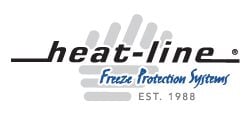
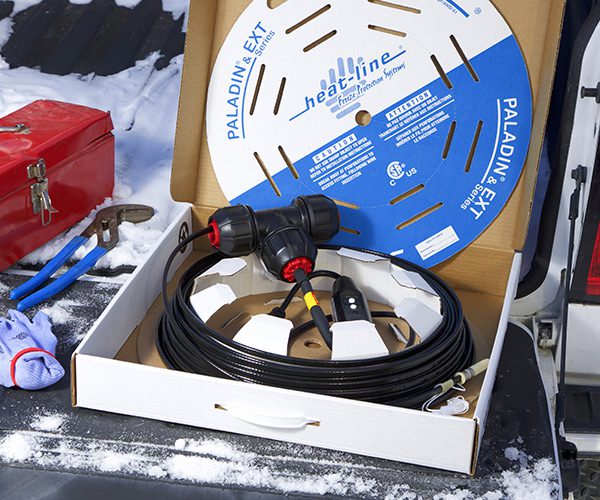
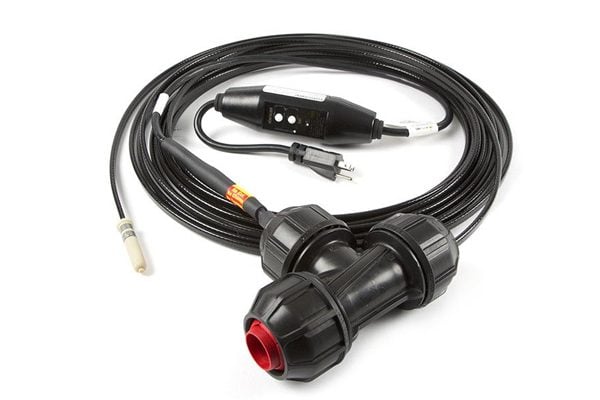



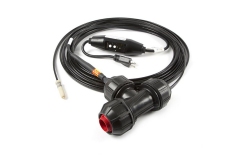











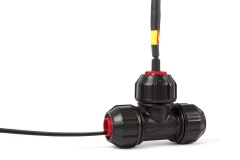




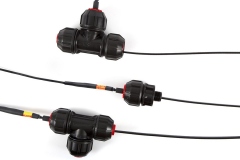








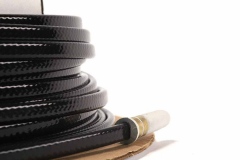











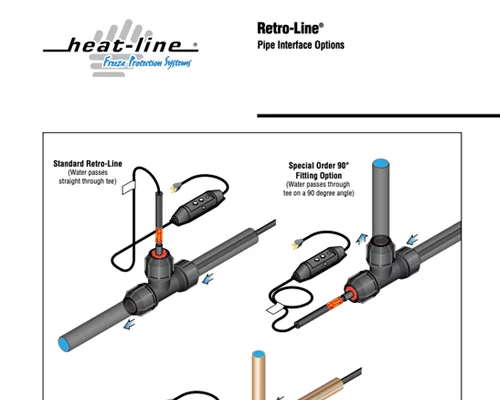


Victoria –
We experienced a water stoppage, found out our line had frozen after trying the hair-dryer and injecting hot water, we discovered a break in the line. Not wanting to go through the process of tracking down and fixing the line we elected to replace the line and install a heat wire, recommend by my son. After reviewing several options from heat tape and heat cable, we chose the internal retro-line. The representative was very knowledgeable and helpful. She answered all my concerns. This level of reinforced our decision. The line was easy to install and the thermostat option give me peace of mind.
Lucie –
Best product and customer service ever!
John –
I ordered Heat-Line after careful and considerable research. I wanted the best Heat Tape made and decided that I would “Buy Once and Cry Once”! I realized that Quality usually means expensive and finally decided that this was the best route to solve my well line freeze problem. My Sales Representative was wonderful and ordering was seamless. The product arrived quickly and exactly as ordered and installed quickly and easily. I’ve already recommended your products to several of my friends. Kudos to a Great Company!
Charles –
Water line heat protection came in the mail in 2 days. It was fabricated so just about anyone could install it. Great customer service and products.
Mike –
Wonderful product, great quality, used them several times to resolve existing waterline installation that would normally freeze every winter.
Al –
I found Heat-Line support very informative and perfectional, answered all my questions. It took me about an hour to cut waterline install new heat-line, close back up and prime pump. Just like they said.
Mike –
Last week my (non Heat-Line) heated water intake cable failed. It’s our only water supply, drawing water from our lake about 150 ft away. With everything frozen solid in the ice, I had no choice but to replace the entire system from cottage to pump if I was going to be able to get things up and running quickly.
Heat-Line provided me with both the information and the equipment I needed to get our water system up and running in short order. In fact, I placed the order on the 18th of January and we picked up the complete system (lines, pump, wiring…) on the afternoon of the 19th.
The previous (non Heat-Line) system was installed just a few years ago, and threading the heating cable through the water intake line was a nightmare that took more than two days to complete. We approached its replacement with some trepidation. Thankfully, our fears were misplaced. We spooled out the Heat-Line in less than an hour, fitted the insulation, attached and wired the pump and had the water system up and running within about 6 hours. Most of that time was spent struggling in -20C weather to cut through 18″ of ice, wire and plumb the pump, and build a bracket to temporarily mount our pump to the side of our dock.
Ron –
Contacted Heat Line immediate answers and expedited fabrication to get an existing heating element replaced due to the cold temperatures. Install was like the instructions pushed the new 125′ internal heating line after removing the existing line. Couple questions answered by technicians and 4 hours later all done.
A big thanks to all at Heat Line! Recommend this product for replacement or new install, well made, everything there and reliable.
Bernie –
Excellent product and service. Phone Sales Rep was extremely well versed in how the product works, could be used and installed and able answer all my questions over the nuances of my specific installation. Response time and availabile was extremely fast and I got via courrier within 2 days of order. I was very pleased with the support and the product on 2 of my lines works extremely well.
Louis –
Extremely easy to install
Jonathan –
This is a company that truly stands by their product. When one of my heat lines moved in the pipe after my blowing it out, a technician called me back immediately to help me trouble shoot and sent a replacement line free of charge immediately. The level of expertise and customer service they deliver is outstanding.
Warren –
Great product! Has kept our rv park from freezing for three years now.
David –
I have 2 exposed waterlines that continually froze. I put a water freeze protector in each and have had no issues since.
The company is excellent at supporting the customer with advice and shipping was only a few days.
Blair –
This product comes highly recommended and I can see why as it’s design and installation method is extremely user friendly. Any homeowner with even limited ABS or PVC piping experience should be able to do the quick and well guided install.
Anthony –
I had the pleasure of speaking with Todd Byers. He took the time to answer all my questions and get my situation resolved very quickly, I would recommend him and Heat-Line to many of my neighbors and friends. My retro-line is in service in central Wisconsin.
Heather –
Like this product. Company rep was very helpful and knowledgeable. We had a relatively easy install, our line was buried. A bit of digging at the 80 foot mark to access a join. Used a fish line to push/ pull the last 20 feet.
Al –
Extremely happy with product and the ease of installation. Was concerned about feeding into a 150 feet of pipe into the lake but went great.
Joseph –
The retro line was so easy to pull. The YouTube videos were very helpful. No more frozen pipes.
Bob –
I highly recommend heat-line and their products, if you need advice, call them. Easy to talk to and they take time to make you feel like you matter to them. They make an excellent product and stand behind it. Thank you.
Jim –
The Retro-Line cable system I purchased from Heat-Line was high quality and easy to install. Todd was tremendous with assistance and questions.
Larry –
5 out of 5 for service. The product was ready to ship in two days as Heat-Line had to build it for me. The Delivery company that is usually a 5 star failed me by taking almost a week to deliver with 4 notices of delay. However, once the Heat-Line landed at my doorstep, installation at my customers place was slick. The 120 foot line was so easy to push in compared to other makes I have used in the past, I’ll always recommend Heat-Line to my customers. Thank you so much for super fast service and an awesome product.
Peter –
I wanted to write your company to express my appreciation for the in-depth analysis of my freezing issues on my waterline here on my farm property. What a luxury having Brent hold my hand considering where and how I might figure out where the weak point in my system was and why contrary to all apparent indicators of a safe system I still had no water.
Bob –
I would like to pass on my regards to your company. I have been retired for 10 years now but worked in the pharmaceutical industry for 40 years, running large and small companies as well as my own consulting business. I have seen companies that are well run and others that are poorly run.
Heatline has all of he hallmarks of a very well run company. Your product line is excellent and the quality of your products is very high. All the staff I have interacted with are knowledgeable, friendly and helpful. Your buildings are very well kept and spotlessly clean.
My congratulations to your entire team.
Tor –
I finally installed the Heat Line yesterday. It took all of 30 minutes inside the pump house at the lakeshore. Everything went together and worked perfectly. It is an impressive product.
I also want to say that I was very pleased with the whole process of getting your quote, adjusting that once, as well as the actual ordering the product…, the confirmation of order shipment and tracking number and finally, the prompt delivery to us in BC within the timeframe suggested.
Thank you from one very happy customer
Kyle –
I just have to say how great your sales rep Matt Roberts is. I had a problem with one of your products, and was expecting push back when I called to have it rectified. Nothing of the sort at all, it made my day. He was understanding, kind, and gave me the feeling that it would be taken care of, and that I didn’t need to worry. He called me several times to verify that everything was good and that I had received the invoices and explained the shipping aspects. It would be nice if every company adapted this quality of customer service.
Mark –
I’ve recently built a house on the shores of lac Gagnon QC in the Laurentians. I ordered your Retro-Line product to freeze protect the existing water line which runs 180 feet from the house down to a submersible pump about 15 feet deep the lake. The Retro Line arrived promptly. It took my plumber and I about an hour to install. The retro reel made feeding the line through the existing water line easy. Setting up the simple electrical receptacle it plugs into in my basement was also very easy. I have spent my first full winter absolutely delighted with your product… simply plugging it in mid-October and unplugging it near end of April. Thanks again!